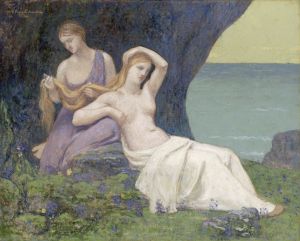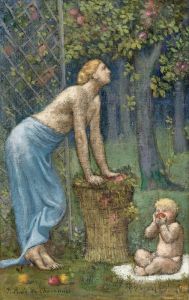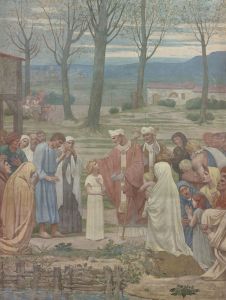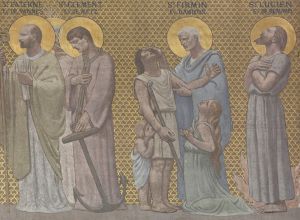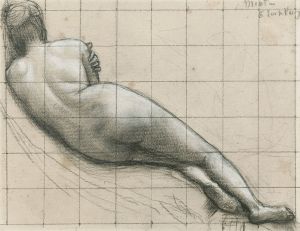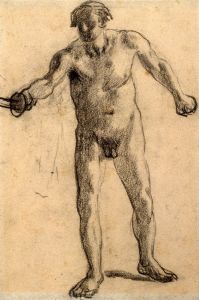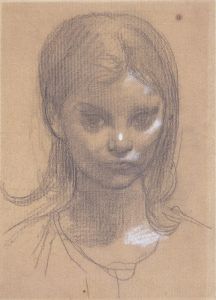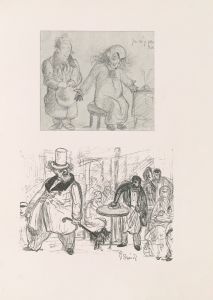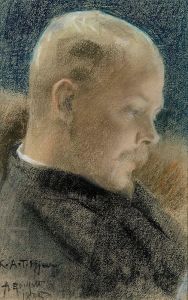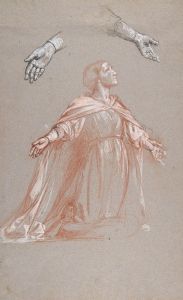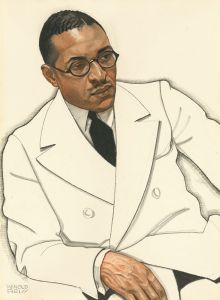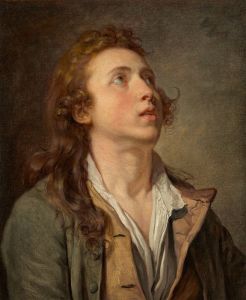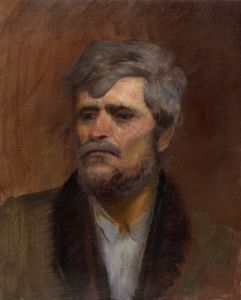
Homme nu de face, bras droit levé
A hand-painted replica of Pierre Puvis de Chavannes’s masterpiece Homme nu de face, bras droit levé, meticulously crafted by professional artists to capture the true essence of the original. Each piece is created with museum-quality canvas and rare mineral pigments, carefully painted by experienced artists with delicate brushstrokes and rich, layered colors to perfectly recreate the texture of the original artwork. Unlike machine-printed reproductions, this hand-painted version brings the painting to life, infused with the artist’s emotions and skill in every stroke. Whether for personal collection or home decoration, it instantly elevates the artistic atmosphere of any space.
Pierre Puvis de Chavannes was a notable French painter in the 19th century, renowned for his mural painting and his influence on the Symbolist movement. One of his works, "Homme nu de face, bras droit levé," which translates to "Nude Man from the Front, Right Arm Raised," is a study that exemplifies his interest in the human form and classical themes.
Puvis de Chavannes was born on December 14, 1824, in Lyon, France. He initially pursued engineering studies but later turned to painting after recovering from an illness. He studied under several artists, including Eugène Delacroix, and was influenced by the works of Théodore Chassériau. His style is characterized by its simplicity, muted color palette, and classical composition, often evoking a sense of timelessness and serenity.
"Homme nu de face, bras droit levé" is a study that reflects Puvis de Chavannes' academic training and his focus on the human body. The artwork depicts a male figure standing in a frontal pose with his right arm raised. This pose is reminiscent of classical sculptures and artworks, which often portrayed figures in idealized forms. The study likely served as a preparatory work for a larger composition or mural, as Puvis de Chavannes frequently created such studies to explore the anatomy and positioning of figures before executing his grand murals.
Puvis de Chavannes' works often drew inspiration from classical antiquity, mythology, and allegory. His approach to painting was not to replicate reality but to convey an idealized vision that transcended the everyday. This is evident in "Homme nu de face, bras droit levé," where the focus is on the purity of form and the harmonious balance of the figure.
Throughout his career, Puvis de Chavannes received numerous commissions for public buildings, which solidified his reputation as a leading muralist of his time. His murals can be found in significant locations such as the Panthéon in Paris, the Musée de Picardie in Amiens, and the Boston Public Library in the United States. These works often feature allegorical and historical themes, rendered in his distinctive style that blends classical influences with a modern sensibility.
Puvis de Chavannes' influence extended beyond his lifetime, impacting artists of the Symbolist movement and even the early 20th-century modernists. His emphasis on composition, form, and the evocative power of imagery resonated with artists seeking to break away from the strictures of realism and explore more abstract and symbolic themes.
While "Homme nu de face, bras droit levé" may not be as widely recognized as some of his larger works, it remains an important piece that showcases Puvis de Chavannes' skill in capturing the human form and his dedication to the principles of classical art. The study serves as a testament to his meticulous approach to composition and his enduring legacy in the world of art.





